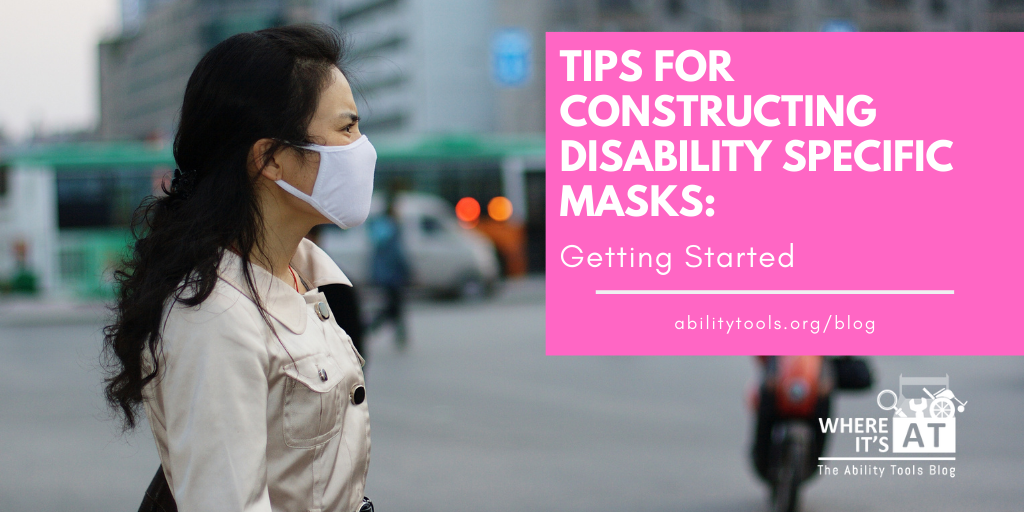Finding the right mask can be a challenge when you have specific needs. A good way to bypass all of the time and expense of testing masks by trial and error is to make your own.
In this blog, we will outline the basics of getting started making your own disability specific face mask. In our next blog, Tips for Constructing Disability Specific Masks: Considerations, we will get into specific considerations one can take to customize their mask to suit their individual needs.

Getting Started
Use different fabrics for either side of your mask to easily tell the difference between the sides. This is important to avoid touching the outside of your mask, as filtered particles can stick to it. If you do touch the outside of your mask, wash your hands well for 20 seconds. If washing up is not possible, be sure to use gloves to reapply a mask or sanitize hands after reapplying.
A study from University of Chicago (1) found that masks made from layers of materials that mechanically filter and materials that electrostatically filter, provide the best protection. They also noted that a layer of batting provided additional protection.
Best options
Avoid porous or heat trapping fabrics
Mechanic filtering fabrics:
• Cotton fabrics – Tightly woven, 600 thread count.
Electrostatic filtering fabrics:
• Natural Silk or chiffon weave (90% polyester-10% spandex)
• Flannel (65% cotton-35% polyester)
Quilting Batting: Cotton-polyester batting
You will also need straps and a nose seal to complete your mask.
On-hand Materials
If unable to purchase new materials, these common household items can also be used to create your mask.
*Please be sure to clean and sanitize before creating your mask
Fabric:
• High thread count sheets
• Unwanted clothes, which will have tags that will tell you what material they are made of.
Straps:
• Sturdy ribbon
• Bra straps
• Hair ties
• Elastic headbands
• Velcro from clothes or shoes
• Strips of fabric
• Shoe laces
Nose seal:
• Pipe cleaners (braided and ends bent in)
• Paperclip (straightened out and ends bent in)
• Surgical tape or dress tape to create a seal (be sure it is skin safe)
Care Instructions
Coronavirus has a lipid (fat) wall. If you break down the wall, you deactivate the virus. Wash your mask using a washing machine and dryer on the hottest setting or by hand and drying with an iron. As Coronavirus isn’t a bacterium, plain soap and water will clean your mask properly; think of dish soap cleaning fat and grease from dishes.
More Resources
For a printable version of this blog in Tip Sheet form, please visit:
• Face Masks for All – Tips for Constructing Disability Specific Masks: Getting Started
For additional information on how you can adapt your mask to make it more accessible for your specific needs, please visit this blog’s companion printable tip sheet:
• Face Masks for All – Tips for Constructing Disability Specific Masks: Considerations
See the Ability Tools video blog:
• No-Sew Facemask Tutorial for persons with face worn assistive technology
The preceding information was intended to increase overall safety awareness. It should not be considered expert advice, nor should it replace a professional consultation. Please reach out to CFILC with any suggestions or concerns.
This tip sheet was created in partnership with the State Council on Developmental Disabilities.
(1) Aerosol Filtration Efficiency of Common Fabrics Used in Respiratory Cloth Masks
Abhiteja Konda, Abhinav Prakash, Gregory A. Moss, Michael Schmoldt, Gregory D. Grant, and Supratik Guha ACS Nano Article ASAP | DOI: 10.1021/acsnano.0c03252




